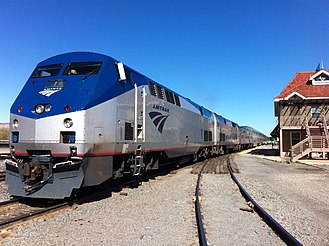Public transportation in the United States
Public transportation in the United States refers to the various forms of transit available to the public, including buses, trains, subways, and ferries. Public transportation is a critical component of urban infrastructure, providing mobility to millions of Americans and reducing traffic congestion and environmental impact.
History
Public transportation in the United States has a rich history dating back to the early 19th century. The first forms of public transit were horse-drawn carriages and streetcars. The introduction of the electric streetcar in the late 19th century revolutionized urban transit, leading to the development of extensive streetcar networks in many cities.
The early 20th century saw the rise of the automobile, which led to a decline in public transit use. However, the establishment of the Federal Transit Administration (FTA) in 1964 marked a renewed focus on public transportation, providing federal funding and support for transit systems across the country.
Types of Public Transportation
Public transportation in the United States includes several modes:
Buses
Buses are the most common form of public transportation, serving both urban and rural areas. They are operated by public transit agencies and provide flexible routing and scheduling.
Trains
Trains include both commuter rail and intercity rail services. Commuter rail connects suburban areas with central cities, while intercity rail, such as Amtrak, provides long-distance travel between cities.
Subways
Subways are underground rail systems found in major cities like New York City, Boston, and Washington, D.C.. They offer high-capacity, frequent service and are essential for daily commuting.
Light Rail
Light rail systems are a modern form of streetcar, operating on dedicated tracks and often serving urban and suburban areas. Examples include the Los Angeles Metro Rail and the Portland MAX Light Rail.
Ferries
Ferries provide water-based transit, particularly in coastal cities and areas with significant waterways. Notable ferry systems include the Staten Island Ferry in New York City and the Washington State Ferries.
Challenges
Public transportation in the United States faces several challenges, including funding, maintenance, and service reliability. Many transit systems struggle with aging infrastructure and require significant investment to maintain and expand services.
Future Developments
The future of public transportation in the United States includes the expansion of existing systems, the introduction of new technologies such as autonomous vehicles, and increased focus on sustainability and reducing carbon emissions.
Related Pages
- Federal Transit Administration
- Amtrak
- New York City Subway
- Los Angeles Metro Rail
- Portland MAX Light Rail
- Staten Island Ferry
- Washington State Ferries
Categories
Transform your life with W8MD's budget GLP-1 injections from $125.
W8MD offers a medical weight loss program to lose weight in Philadelphia. Our physician-supervised medical weight loss provides:
- Most insurances accepted or discounted self-pay rates. We will obtain insurance prior authorizations if needed.
- Generic GLP1 weight loss injections from $125 for the starting dose.
- Also offer prescription weight loss medications including Phentermine, Qsymia, Diethylpropion, Contrave etc.
NYC weight loss doctor appointments
Start your NYC weight loss journey today at our NYC medical weight loss and Philadelphia medical weight loss clinics.
- Call 718-946-5500 to lose weight in NYC or for medical weight loss in Philadelphia 215-676-2334.
- Tags:NYC medical weight loss, Philadelphia lose weight Zepbound NYC, Budget GLP1 weight loss injections, Wegovy Philadelphia, Wegovy NYC, Philadelphia medical weight loss, Brookly weight loss and Wegovy NYC
|
WikiMD's Wellness Encyclopedia |
| Let Food Be Thy Medicine Medicine Thy Food - Hippocrates |
Medical Disclaimer: WikiMD is not a substitute for professional medical advice. The information on WikiMD is provided as an information resource only, may be incorrect, outdated or misleading, and is not to be used or relied on for any diagnostic or treatment purposes. Please consult your health care provider before making any healthcare decisions or for guidance about a specific medical condition. WikiMD expressly disclaims responsibility, and shall have no liability, for any damages, loss, injury, or liability whatsoever suffered as a result of your reliance on the information contained in this site. By visiting this site you agree to the foregoing terms and conditions, which may from time to time be changed or supplemented by WikiMD. If you do not agree to the foregoing terms and conditions, you should not enter or use this site. See full disclaimer.
Credits:Most images are courtesy of Wikimedia commons, and templates, categories Wikipedia, licensed under CC BY SA or similar.
Contributors: Prab R. Tumpati, MD







